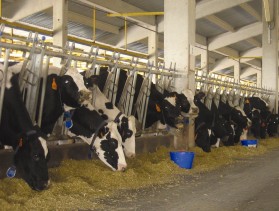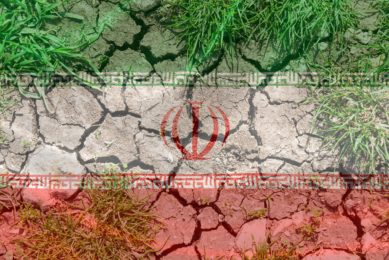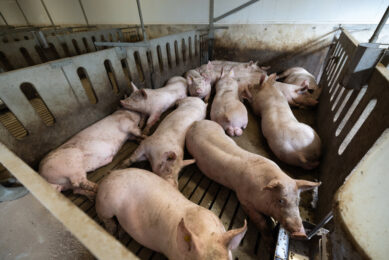Helping the environment comes at a cost

It is not without cost for the dairy cow or the farmer to be eco-friendly, if the route taken is by reducing nitrogen and phosphorus in cattle feed – but scientists have spotted some possibilities.
Meat and milk are products that consumers demand but production of these comes at a cost to the environment.
Only about one third of the nitrogen and phosphorous that the cow eats is utilized. The rest comes out the other end as manure and urine and can thus have a negative impact on the environment.
Methane is known as a greenhouse gas and is produced by the microbial metabolism in the rumen in varying amounts, dependent on what the cow eats, and is emitted with each cow burp.
Scientists at the Faculty of Agricultural Sciences at Aarhus University are working diligently to find solutions to the problem.
Cows challenged
One of the possibilities the scientists are investigating is reducing the level of nitrogen and phosphorus in cattle feed in order to reduce the nutrient emission from the cows.
”We challenge the cows’ biology and physiology by going right to the edge with regard to feeding the required amounts of nitrogen and phosphorus. We then look at how this particular stress affects the animals and their milk production,” explains research professor Niels Bastian Kristensen from the Department of Animal Health and Bioscience in Denmark.
A nitrogen deficiency can quickly lead to loss of appetite in the cow and reduction in protein content of the milk.
A phosphorus deficiency is not immediately obvious, but if the deficiency continues it can be bad news for the cow. She compensates for the deficiency by drawing on phosphorus stores in her bones with the result that her bones become more and more fragile as time goes by.
Eco-friendly dairy cow
The goal is to benefit the environment without having negative effects on the health and welfare of the dairy cow.
”We are trying to achieve the eco-friendly dairy cow. This is a cow that is not overfed with nutrients but whose feeding is optimized according to knowledge of the biological connections between nutrition, production conditions, milk production, health, feedstuff quality, and the effect of the production on the environment,” says Kristensen.
In the course of their studies, the scientists have found that there is a great individual variation in cows’ abilities to tolerate a low nitrogen supply. Some cows are quite simply more efficient at producing milk on a nutrient-poor diet than others.
”We don’t know yet if this is something we can use in breeding programmes, but it would be interesting to find out more,” says Kristensen.
The efforts to benefit the environment can easily affect milk production in a negative way. The scientists are also investigating the economic connections, such as how great a value the environmental effect must have in order for it to balance out with the loss of value in milk production.
The research has been supported by the Danish Ministry of Food, Agriculture and Fisheries.











